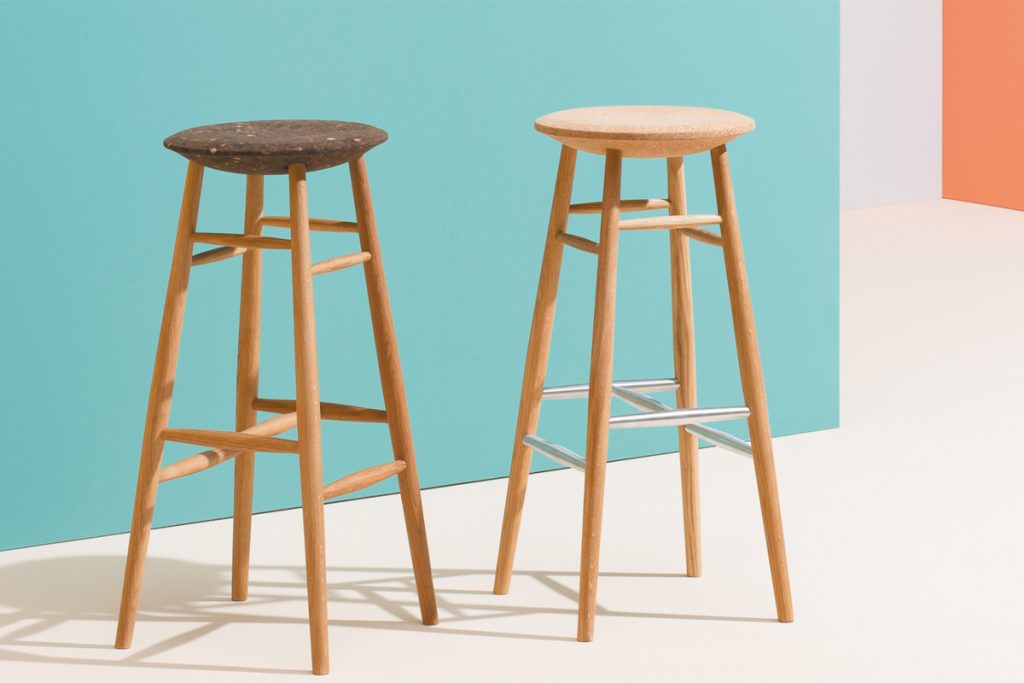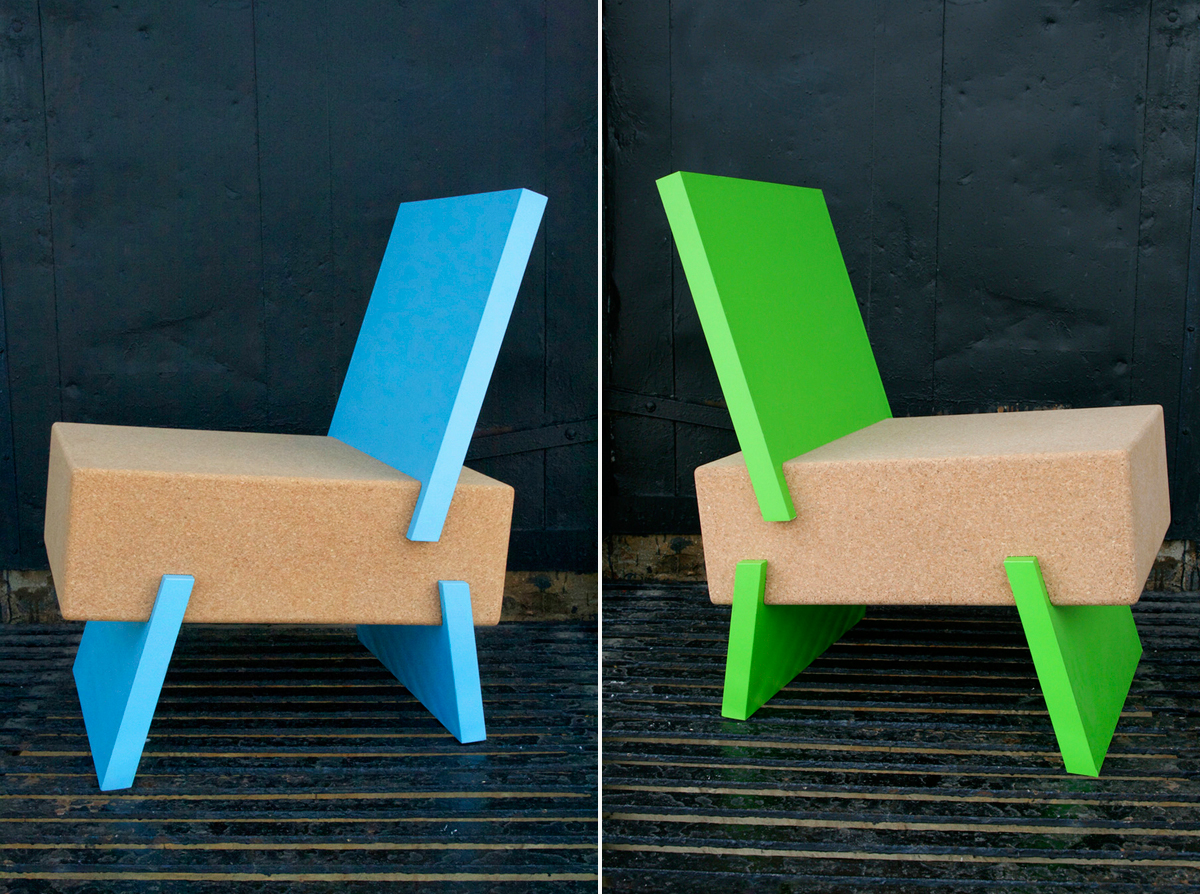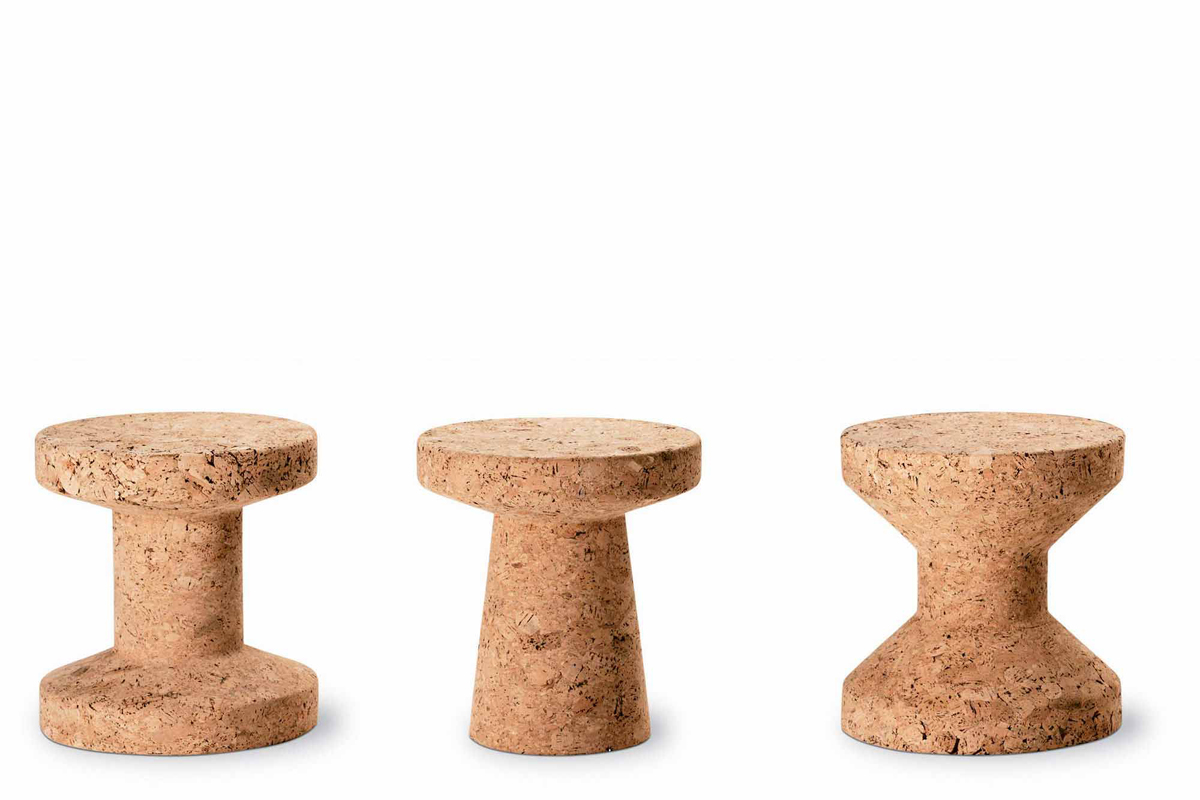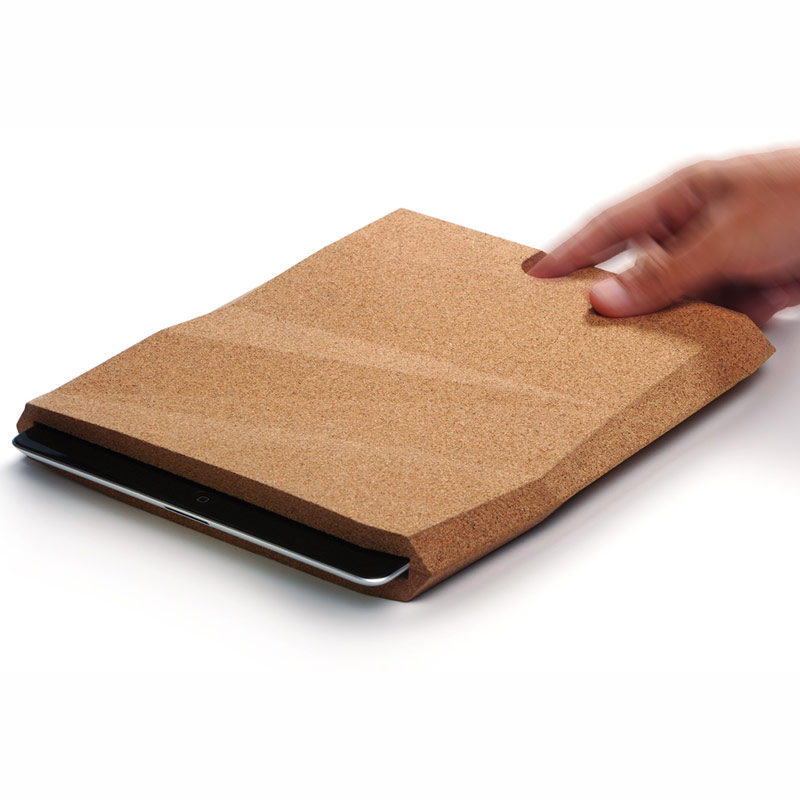The Natural Simplicity of Cork
Exploring the ways in which designers use the material to create clean and sustainable pieces

Few materials are as versatile as cork. The pliable, lightweight, eco-friendly material is much more than a bottle stopper, lending itself as an accent or main medium in decorative and furniture fabrications. Because of this flexibility, cork is booming, becoming a new way for designers to play with simple, approachable works that reflect the character of the wood. By stripping away unnecessary additions and details, designers are using cork on its own—crafting fascinating pieces made by shaping the simple material.

Furniture designer Daniel Michalik is best known for his cork works. He has centered his practice on the limitlessness of the light wood, from his blocky 3/1 Chair to the scooping Cortiça Chaise, the bendy Sway Stool to the reclining Tilter Chair. Michalik’s love of cork has become the point of departure in his practice and, as he told us in 2013, it’s because cork is so affordable and unique. “I saw its potential and kept trying to see where I could push it,” he said. His NYC studio, DMFD, is focused on sustainable, simple materials and exploring different ways in which to utilize them.

Lars Beller Fjetland is similar to Michalik in his love of cork, inspiring his “Drifted series” of chairs, barstools, and stools. Each item in the Norwegian furniture designer’s range features a flattened cork seat atop spindly legs that riff on classic chair designs altered by the gesture of replacing the seat with a warm, cork pad. The series was inspired by a visit to Øygarden in Norway where cork drifted ashore in unique shapes that drew his eye. His collection certainly achieves that eye catching subtlety.

Frequently employing wood, British designer Jasper Morrison‘s use of cork is perhaps more intriguing—and popular. His 2004 “Cork Family,” a set of small tables produced by Vitra, appear to be high-end meditations on champagne corks—a noted design cliché—that is reduced to the bare minimum. Morrison most recently used cork as a façade for a hut produced by Muji and, as he said in 2016, cork is a material that he enjoys (amongst others): he employs it from his “large palette of materials,” used when most appropriate, and it works well as a handle, chair or surface material.

While cork is quite limitless in its use in furniture, it’s best when bent toward the reduced. You see this in Italian designer and architect Paola Navone’s Cork 05 chair and Cork 45 ottoman, two outdoor designs that embrace the roundedness of wood lightly touched by human intervention. You see this with Russian architecture studio KDVA’s Archair, which combines metal and cork to create a breathtakingly simple chair befitting of lounging at home or café style seating thanks to the softness of the material. And you see this with Portuguese modular concept COMO, a new meditation on cork that provides long U-shaped segments for creating cork tables and shelves as you desire.
Cork is a de facto everyman material to be used in both high and low designs, but where cork shines is as an object’s focus, either as the principal material used or the key item in the construction of a design. It’s unsurprising that cork and reductionism fit so well together: it’s a material that one wants to focus on, often accomplished by molding and shaping it so cork is all the eye sees.
Images courtesy of respective designers, Beller and hero images courtesy HEM












